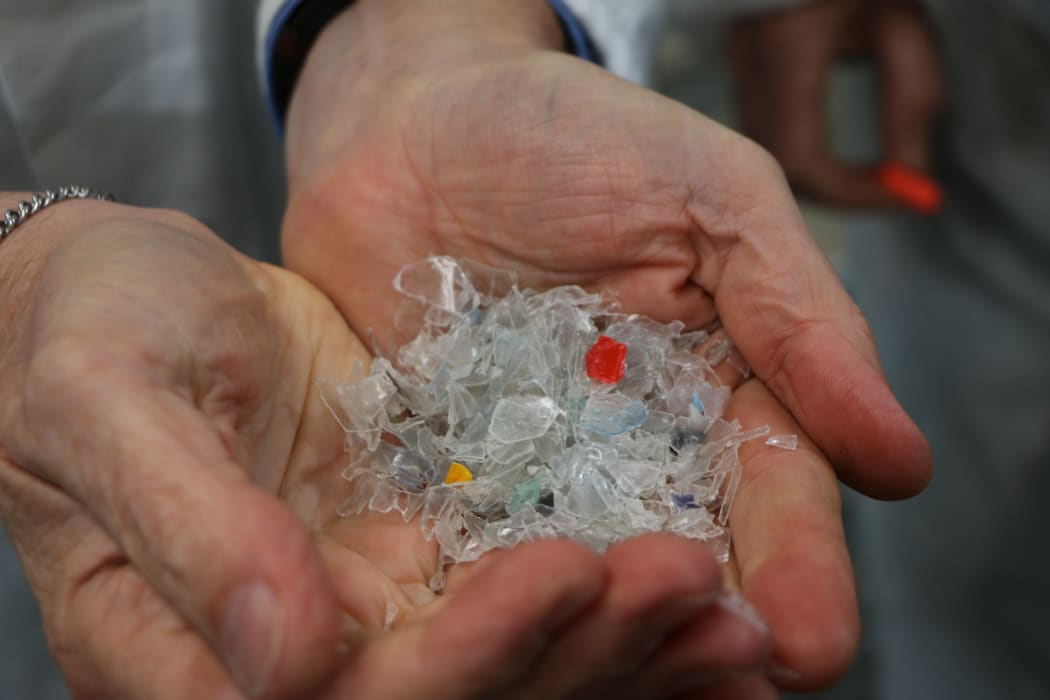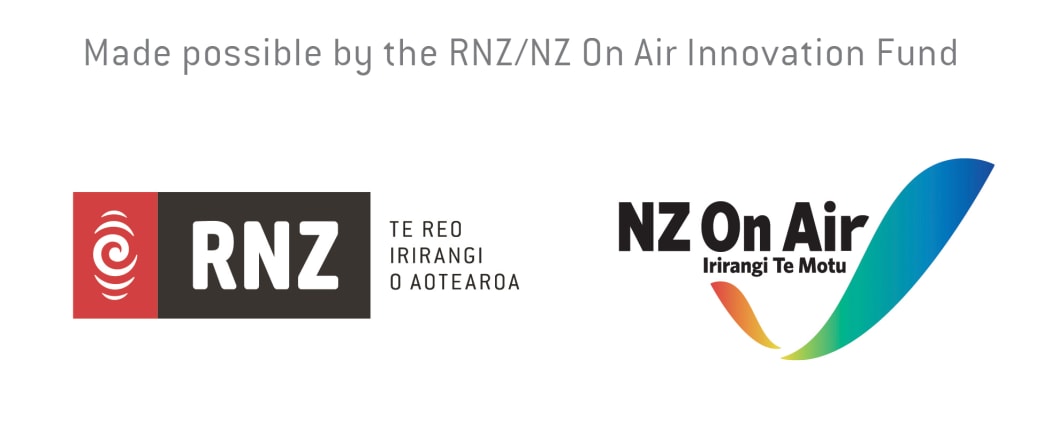
Plastic flakes, washed and broken up, ready to become semi molten before being extruded into plastic sheets for reincarnation as another plastic item at Flight Plastics. Photo: Supplied Wellington City Council
The problem with plastic, is it’s not just the pollution you can see - the fishing rope washed up on shore, the bags sloshing around in the sea, the broken toys in rubbish dumps.
It’s the invisible stuff.
Tiny particles that are making their way into our soil and seafood. Nano-particles are so small we don’t even know how much harm they’re doing us.
Some of the plastic is laced with toxic additives that leach into the environment or cause other problems.
Newsroom.co.nz’s science and environment reporter Eloise Gibson says it’s the surprising things in our everyday lives that shed micro, macro and the tiniest, nano-plastics that are a big worry.
Gibson points to sequins and shiny fabrics, fluffy dressing gowns and fleecy hoodies. We can't get rid of those synthetics immediately, but we could mitigate the effects by putting gadgets in our washing machines to stop the plastic particles washing out, and bring in better wastewater filter systems so it doesn’t wash out to sea.
“Virtually everywhere scientists go looking, they find them,” says Gibson. That includes in soil, fish and shellfish.
The presence of tiny plastic particles, and the lack of good data about effects of those and other plastics, is highlighted in the first report from the Prime Minister's new Chief Science Adviser, Juliet Gerrard.
Called ‘Rethinking Plastics’, the 264-page report starts positively with Professor Gerrard's vision of Aotearoa in 2030 if we all do our bit.
“The picture … is quite hopeful in terms of; it envisages a future where all of our plastic that is recycled, is recycled on shore, so we’re not shipping the problem to China; we’ve got sustainable markets here where we’re using high quality plastic that people want to recycle; when things are likely to end up in compost or on the ground it’s bio-degradable; and where possible it’s just easy for people to not use it,” says Gibson.
Plastic is not all evil and there's no suggestion of getting rid of it altogether, says Gibson. And there are lots of good things going on.
“One of the findings is that if everybody was doing what the best people are doing, it would go a long way.
“The report’s quite clear that we do need some plastics and that plastic has a place in society. So, aeroplanes are much lighter now that some parts are made of plastic rather than metal, that reduces the greenhouse gasses that they produce because they don’t need as much fuel to fly.
“In other cases having plastic food wrapping can reduce food waste, which is ultimately perhaps better on balance.
“The report isn’t saying that we don’t need any plastics, what it’s saying is that we are using an enormous amount of plastic when we don’t really need to ... and that many of the types we are using are needlessly damaging.”
Gibson says one of the things the report throws up is that we need to buy less – of everything. “And that probably includes clothes.”
The government this week announced it will ban polystyrene cups, meat trays and fruit stickers.
It’s also expected to introduce plastic bottle depots and deposit schemes, and raise the landfill levy.

Photo: RNZ

